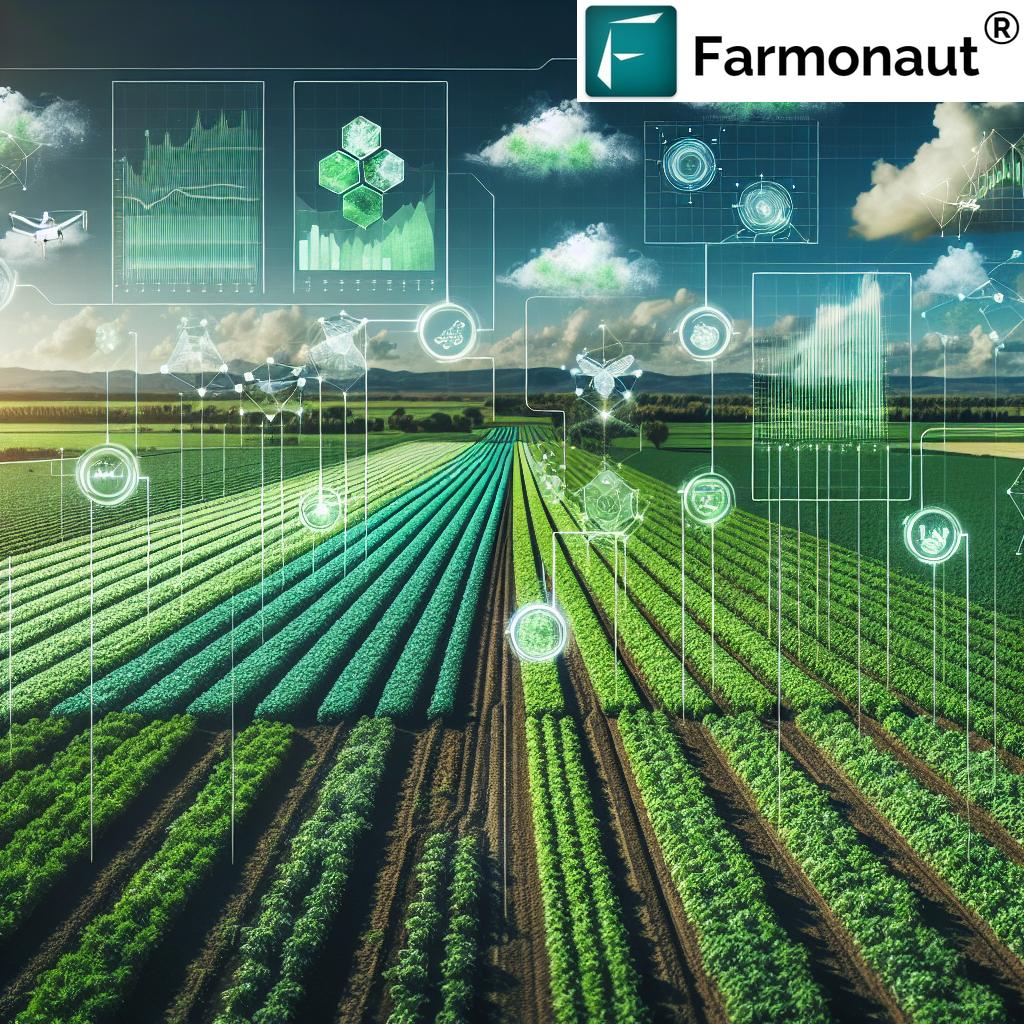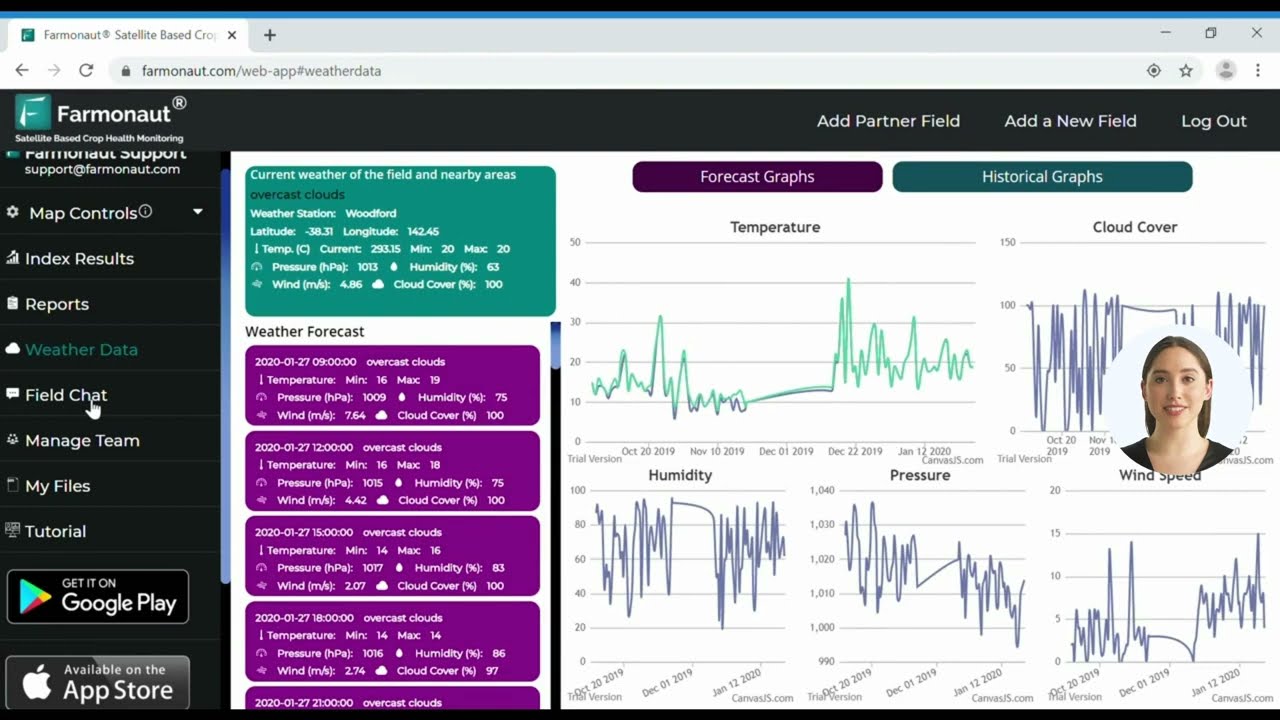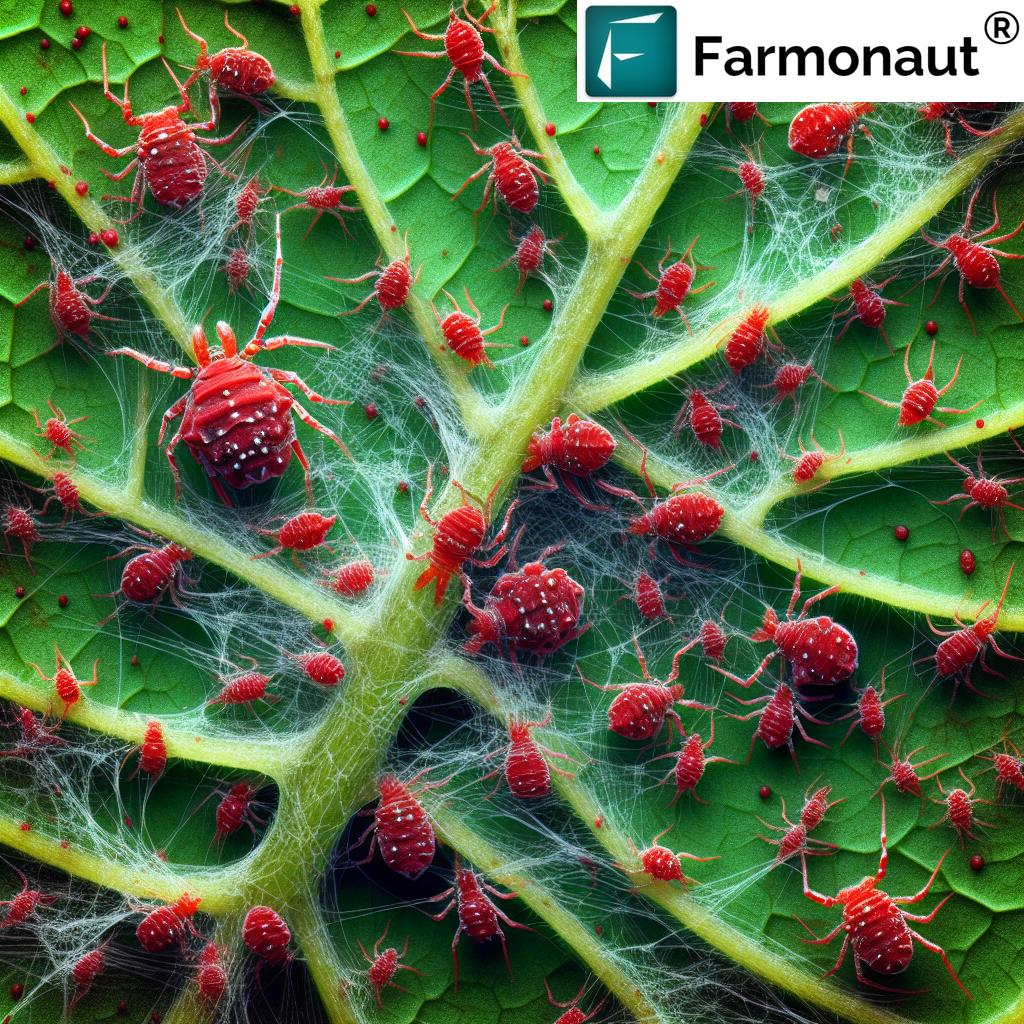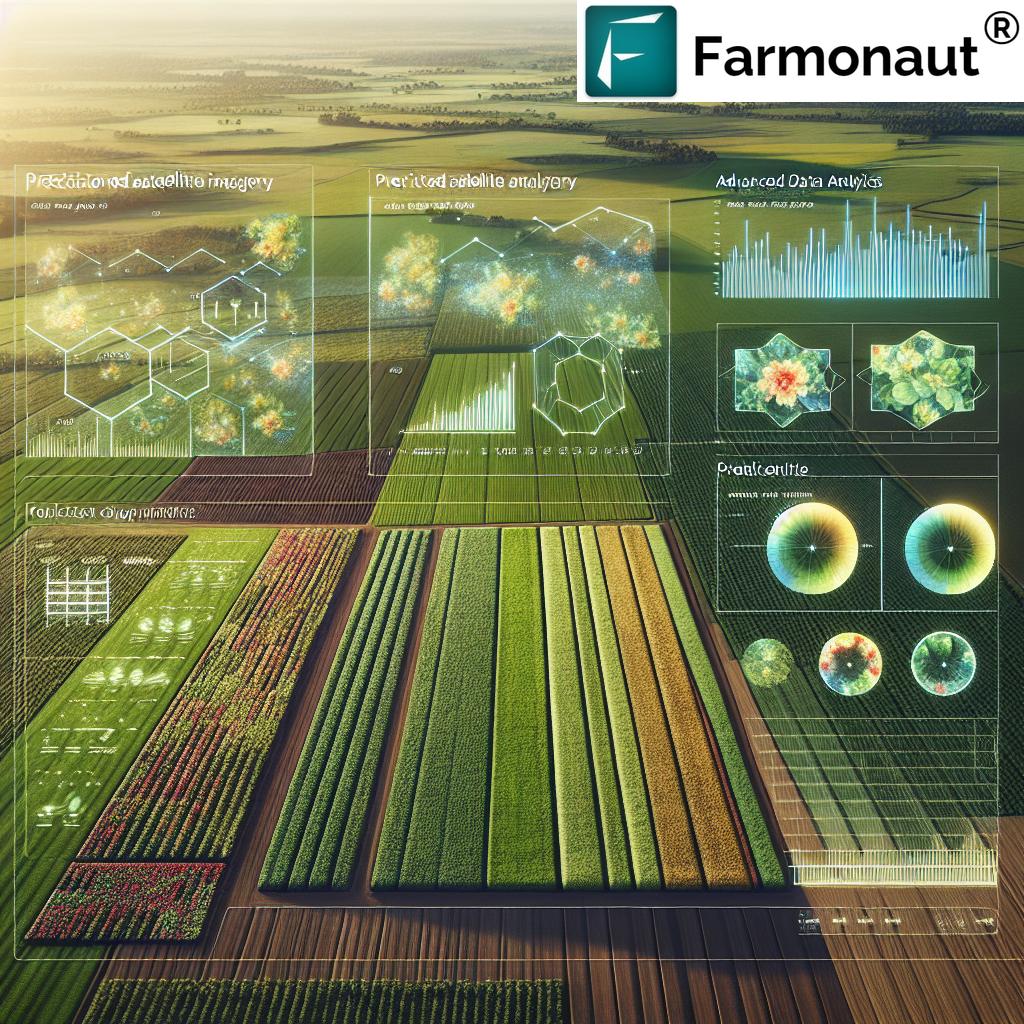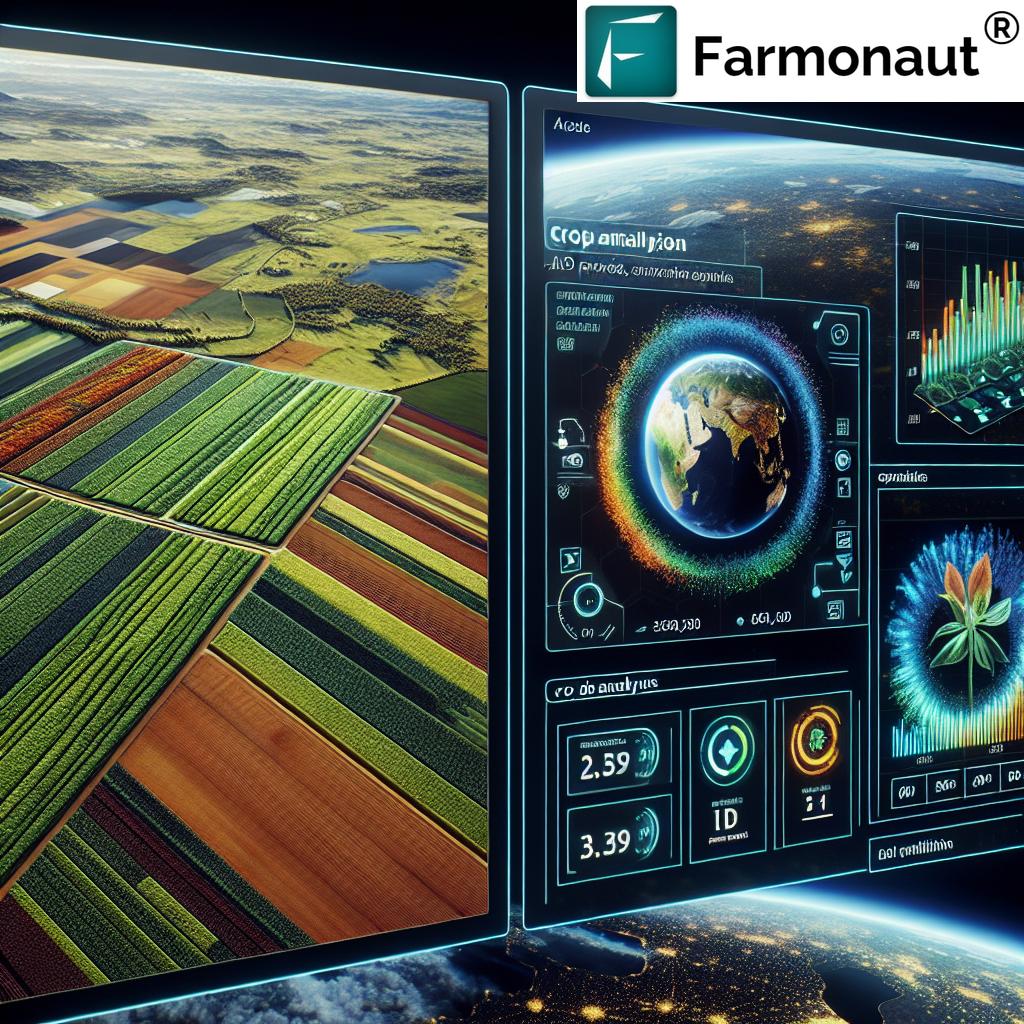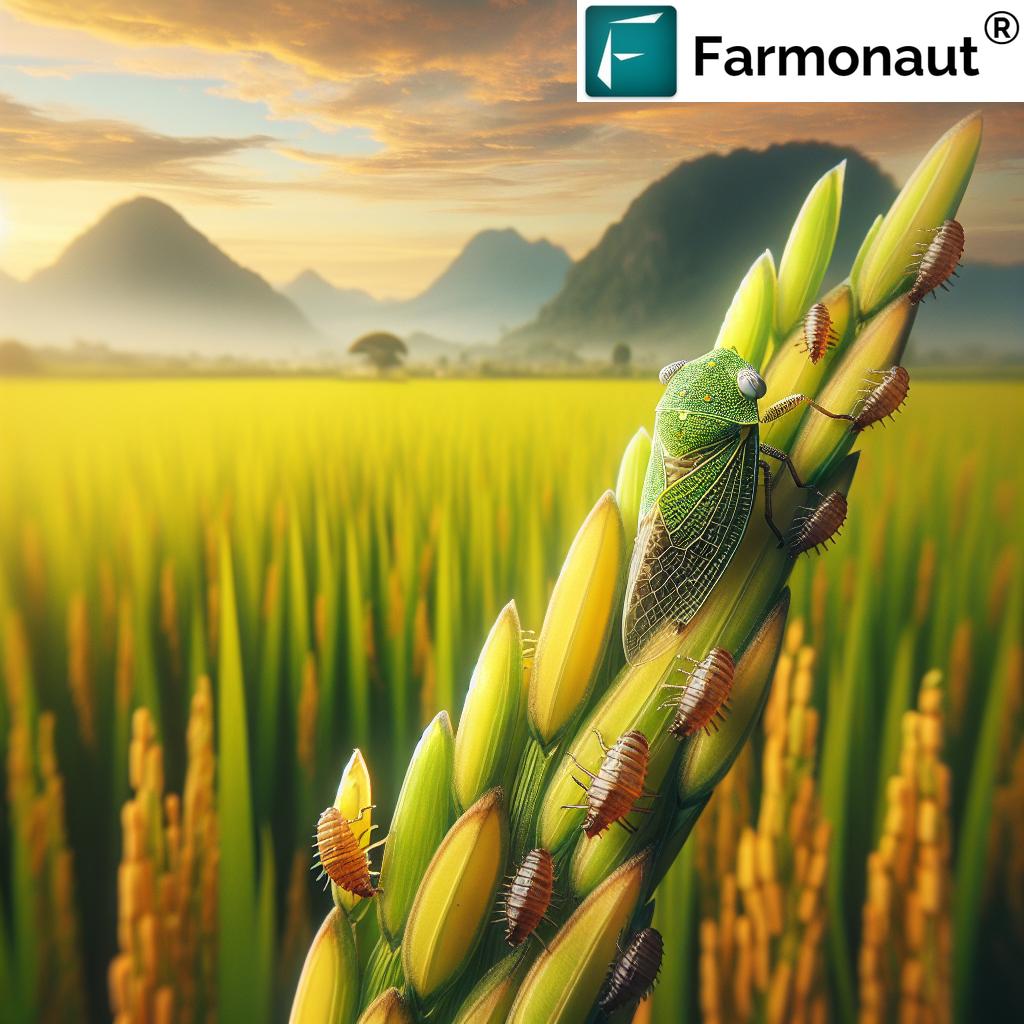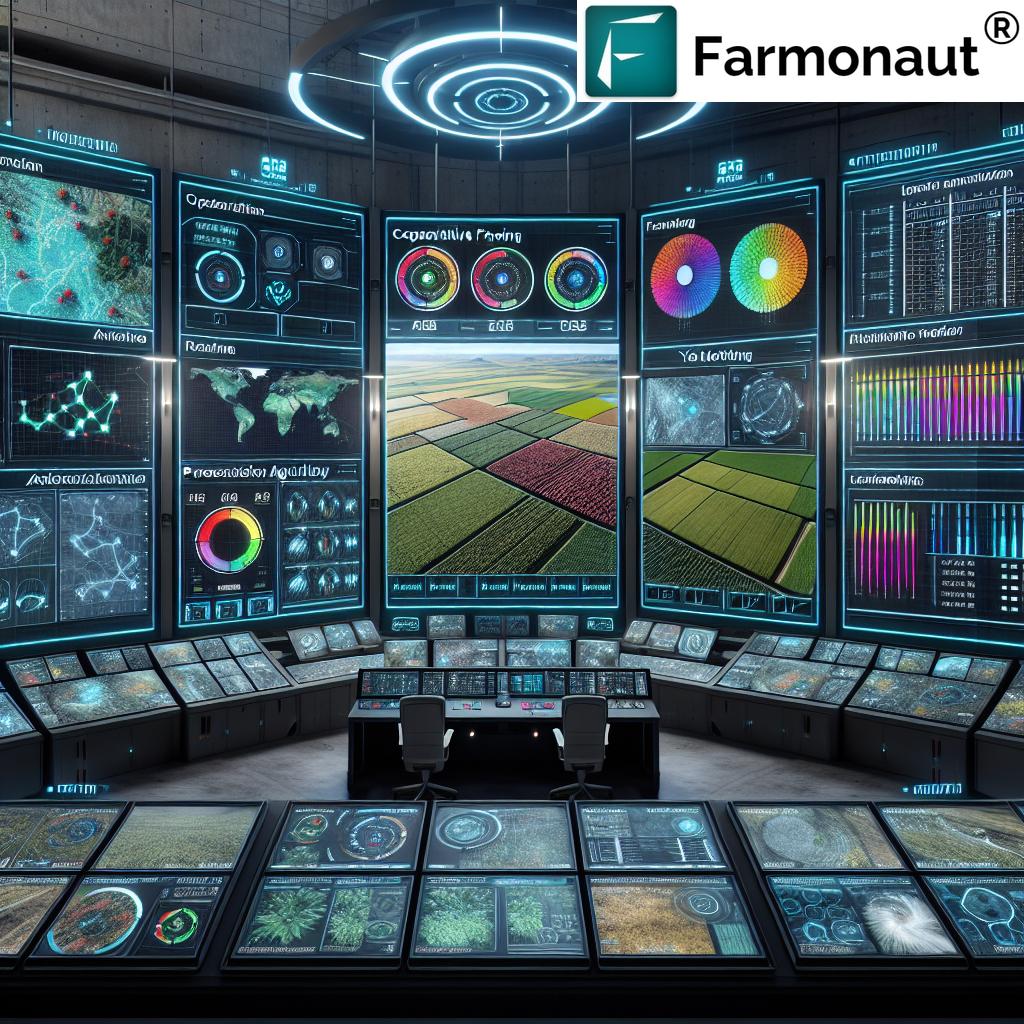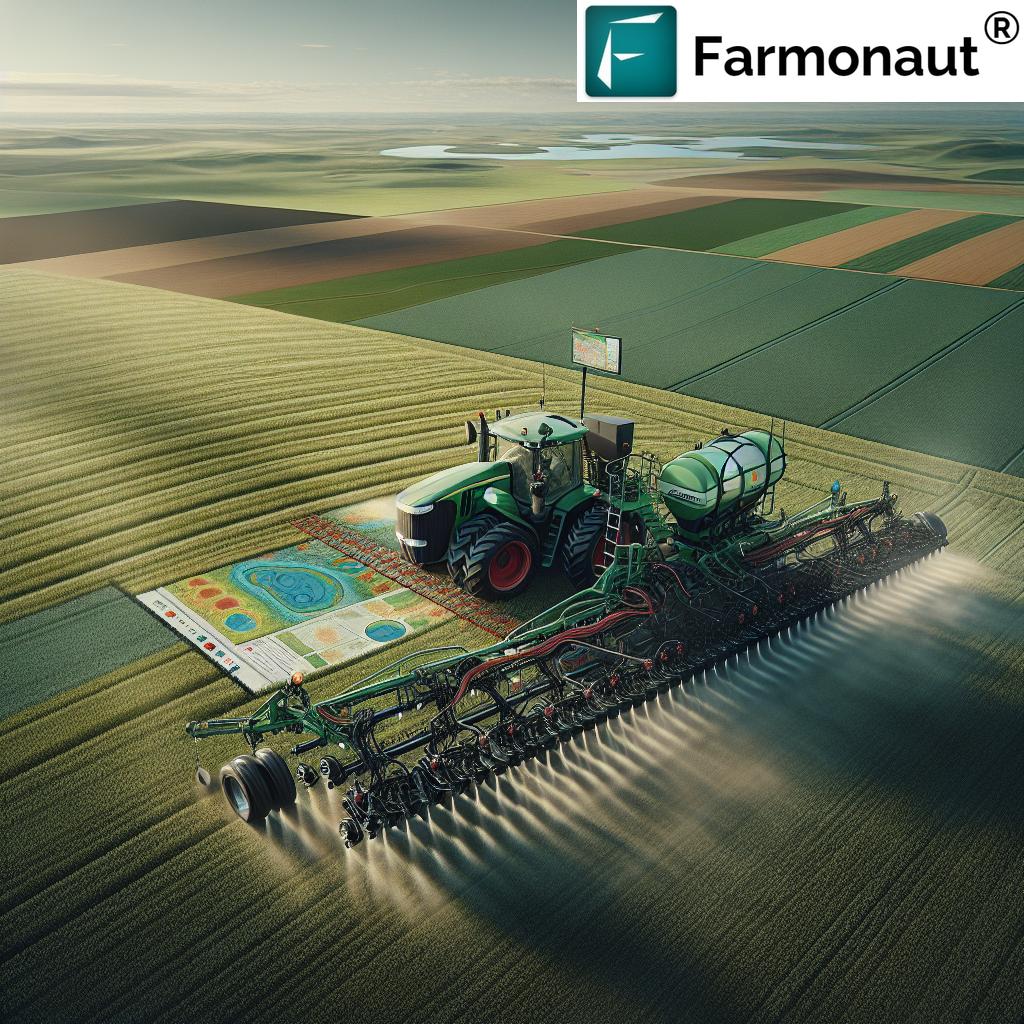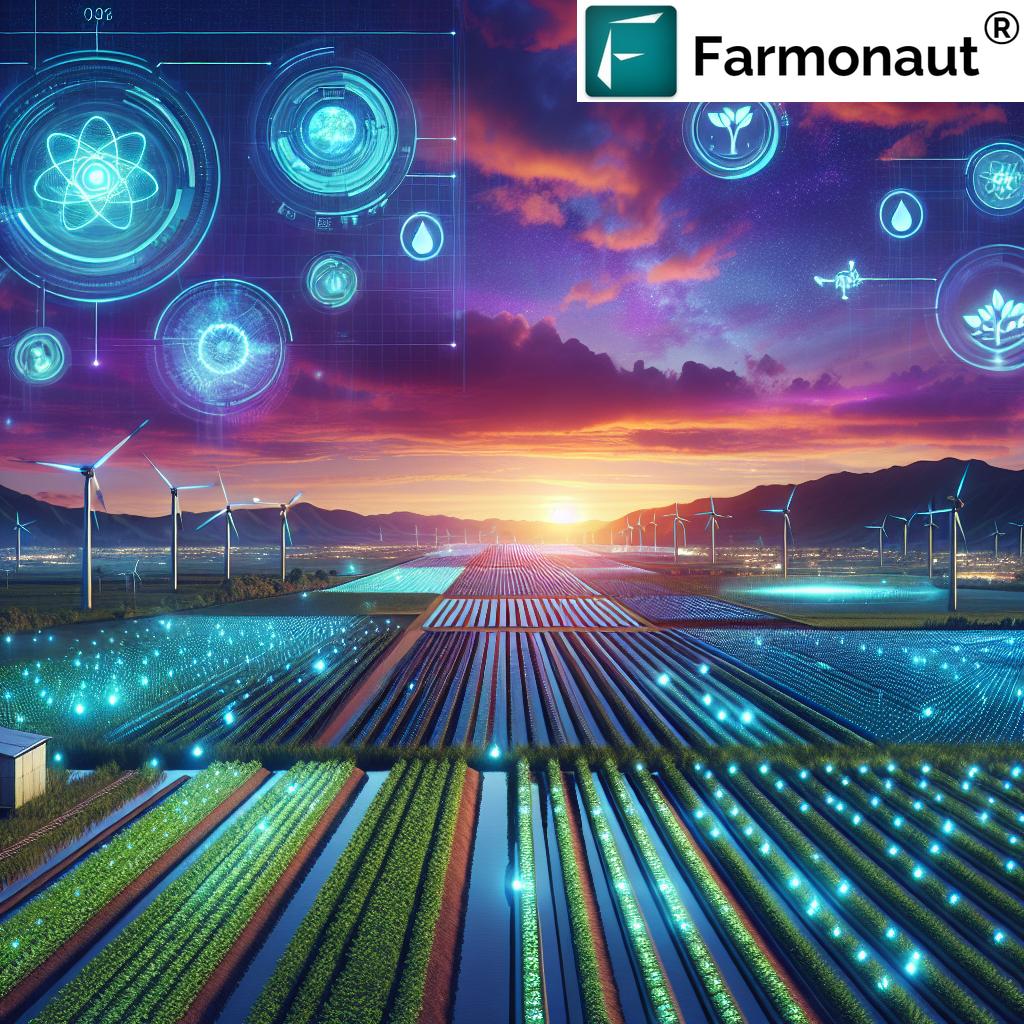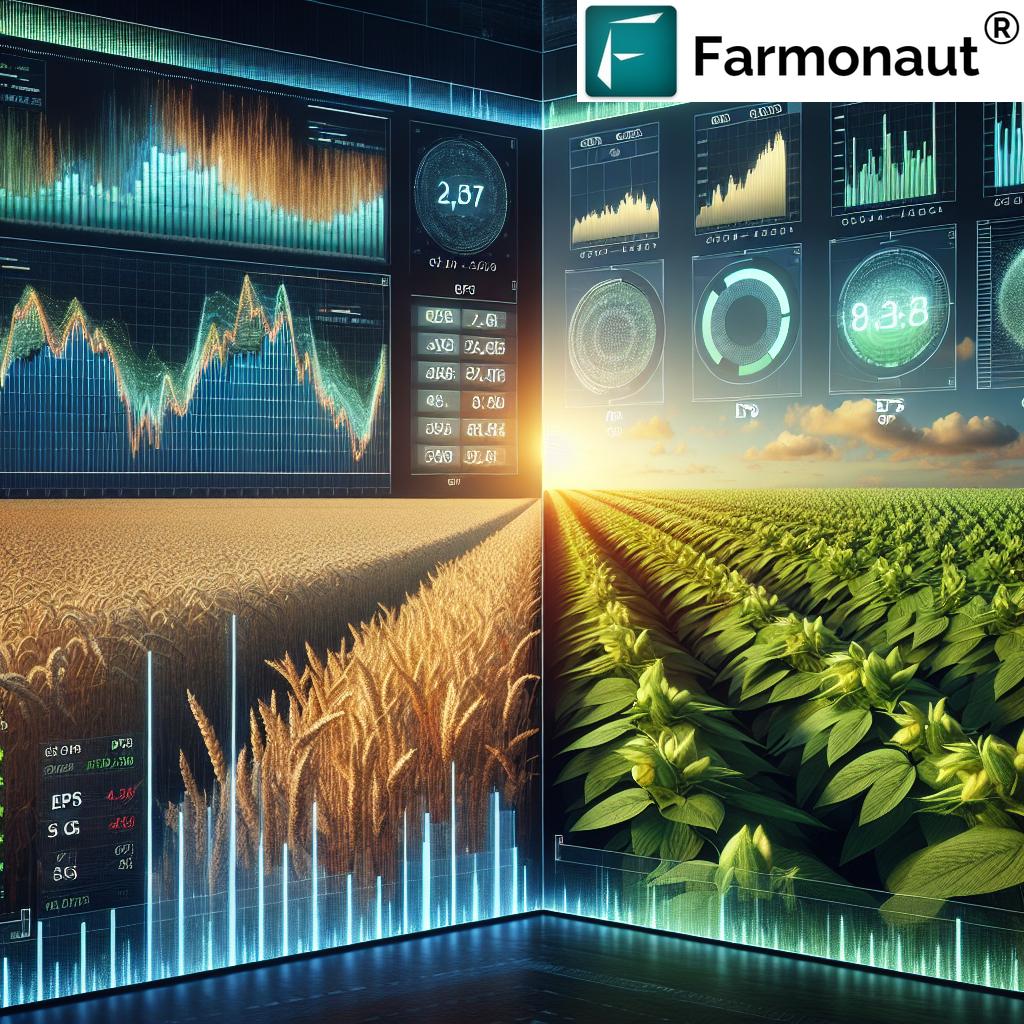Agricultural Drone Secrets: 7 Shocking Farmer Benefits
“Drones can survey up to 1,000 acres of farmland in a single day, revolutionizing large-scale crop monitoring.”
Table of Contents
- Introduction: Agricultural Drones Transforming Modern Farming
- Understanding Drone Technology in Agriculture
- 7 Shocking Benefits of Agricultural Drones for Farmers
- Core Applications of Agricultural Drones
- Farmonaut: Data-Driven Precision Farming Solutions
- Farmers’ Benefits of Drones: Side-by-Side Table
- Challenges & Regulations for Agricultural Drones
- The Future of Drones in Sustainable Agriculture
- How to Choose Drone Solutions & Management Platforms
- Frequently Asked Questions (FAQ) on Agri Drones
Introduction: Agricultural Drones Transforming Modern Farming
In recent years, agricultural drones—also called unmanned aerial vehicles (UAVs)—have emerged as game-changers in the world of modern farming. These advanced aerial tools have empowered farmers around the globe to maximize yields, reduce waste, and practice more sustainable resource management. What makes drone technology in agriculture so revolutionary is its ability to provide real-time data, analyze crop health, and offer precision farming solutions that were once unthinkable.
Today, we’ll unlock the 7 shocking benefits that agricultural drones deliver, share cutting-edge applications, and demonstrate how integrating platforms like Farmonaut can optimize your productivity with minimal environmental footprint. We’ll also guide you through regulations for agricultural drones, highlight challenges, and point towards the next era of efficiency in agriculture.
Understanding Drone Technology in Agriculture
Let’s demystify the power behind drone technology in agriculture. Agricultural drones are remotely controlled UAVs equipped with multispectral and RGB sensors, and advanced imaging equipment. These drones allow us to capture high-resolution images and assess crop health at unmatched speed and scale.
By integrating advanced technologies—like AI-driven data analysis, satellite connectivity, and machine learning—drones provide our farms with precise inputs for everything from irrigation management to pest and disease detection. The result? Real-time crop health monitoring with drones, resource allocation, and smarter decision-making.
But what are the shocking ways these unmanned aerial vehicles actually deliver benefits to the modern farmer? Let’s dive into the key secrets.
7 Shocking Benefits of Agricultural Drones for Farmers
The benefits of drones for farmers extend far beyond fancy aerial views. Here are the seven most transformative advantages agricultural UAVs offer:
-
1. Ultra-Fast and Precise Crop Monitoring
Drones equipped with high-resolution cameras, multispectral sensors, and NDVI analysis tools can scan and detect stressed areas in crops in real-time. This allows us to identify issues like disease, pest infestation, and water stress quickly—covering hundreds of acres in a fraction of the time traditional methods would take. For instance, while a field scout may assess 10–20 acres a day, a drone can survey up to 1,000 acres in a single day!
-
2. Advanced Crop Health Assessment and Early Warning
The integration of Normalized Difference Vegetation Index (NDVI) and other vegetation indices empowers us to monitor crop health with drones and pinpoint early-stage issues invisible to the naked eye. This enables targeted interventions, reducing waste and improving yields.
-
3. Drone-Based Soil Analysis & Mapping for Precision Farming Solutions
With drone-based soil analysis, we get detailed soil maps capturing properties such as moisture levels, texture, and organic matter distribution. This informs our planting strategies—allowing hyper-localized seeding, fertilizer application, and effective precision farming solutions.
-
4. Automated Irrigation Management & Water Savings
Through the detection of water stress and uneven irrigation patterns, drones assist in designing efficient irrigation systems. This leads to reduced water waste, optimized resource allocation, and stronger sustainability outcomes. The automation of such processes ensures uniform distribution and minimizes manual labor.
-
5. Faster Pest and Disease Detection with Reduced Pesticide Use
Pest and disease detection drones spot outbreaks early. By acting swiftly with localized treatment, we minimize the use of broad-spectrum pesticides—resulting in up to 30% reduction in chemical use* and a smaller environmental footprint.
-
6. Efficient Drone Spraying & Seeding
Agricultural drones can autonomously spray fertilizers, pesticides, and seeds with pinpoint accuracy. This not only accelerates operations but also improves the effectiveness of each application, reducing input costs and environmental exposure.
-
7. Accurate Yield Estimation & Harvest Planning
Leveraging this wealth of drone-captured data and AI-driven analysis, we can forecast yield much earlier and with greater accuracy. This helps refine market planning, labor allocation, and logistics—ensuring resources are deployed where they’re needed most.
“Precision drone spraying reduces pesticide use by up to 30%, promoting more sustainable and efficient farming practices.”
- Interested in crop loan and insurance solutions? Use advanced satellite-based verification to reduce fraud and speed up loan approval.
- Enable your business with Fleet & Resource Management. Optimize vehicle use, manage agricultural machinery, and cut operational costs.
- Achieve sustainability targets with carbon footprint tracking. Take charge of emissions and compliance across your operations.
- For supply chain transparency, access blockchain-based traceability. Boost consumer trust with verified product origins.
- Managing vast plantations or forests? Try the Agro Admin large-scale farm management tool for seamless admin, monitoring, and reporting.
- Want forestry & crop advisory? Learn more here.
Core Applications of Agricultural Drones
Agricultural drones are versatile and can be integrated across a wide spectrum of farming processes. Let’s break down the high-impact areas and related use cases:
Crop Monitoring and Health Assessment
- Equipped with multispectral and RGB sensors: Drones capture high-resolution images across the visible and near-infrared spectrum, making the invisible—visible!
- NDVI and other indices: These scientific tools help identify stressed areas.
- Targeted interventions: Insights support data-driven decisions in fertilization, irrigation, and pest management.
Soil Analysis and Mapping
- Drone-based soil analysis creates detailed soil maps that evaluate moisture, texture, and organic matter.
- Optimized planting: Farmers can now strategize seeding and resources by field zone, preventing waste.
Precision Irrigation Management
- Detecting water stress and uneven patterns: Enables fine-tuned allocation of water, reducing over- or under-irrigation.
- Automated irrigation management: Connects seamlessly with IoT systems, triggers remote scheduling, and customizes water input for each field area.
Pest and Disease Detection
- Early detection: Drones equipped with specialized sensors can identify outbreaks before they become unmanageable.
- Localized response: Focused spraying, reducing unnecessary pesticide use and environmental risks.
Drone Spraying and Seeding
- Precision spraying of pesticides and fertilizers: Drones adjust to crop height, density, and wind conditions; this reduces drift and maximizes absorption.
- Efficient seeding: Autonomous systems distribute seeds consistently, improving germination rates and lowering labor costs.
Yield Estimation and Harvest Planning
- Data-driven planning: Drone imagery cross-referenced with AI enables reliable yield prediction and market readiness.
- Logistics optimization: Anticipate labor and equipment requirements, minimizing downtime.
Farmonaut: Data-Driven Precision Farming Solutions
As our farms embrace a new era driven by technology, platforms like Farmonaut are at the forefront—bridging advanced data science and accessible tools for every scale of agricultural operations.
Farmonaut integrates satellite-based crop health monitoring, AI-driven advisory, blockchain traceability, and resource management, making precision agriculture affordable and scalable:
- Satellite Crop Monitoring: Real-time multispectral imaging (NDVI, moisture, health indices) for informed decisions.
- Jeevn AI Advisory: Personalized, AI-driven crop and weather recommendations.
- Blockchain Traceability: Ensures farm produce transparency from field to consumer.
- Fleet & Resource Management: Optimize farming machinery, people, and logistics for maximum output and cost savings.
- Carbon Footprinting: Real-time emissions tracking for sustainable agriculture practices.
- API & App-Based Access: Available via web, Android, iOS, and open APIs for seamless integration—API Data Access; Developer Docs
Farmonaut is designed for smallholder farmers all the way to large agribusinesses and government organizations, ensuring impact at every step.
Farmers’ Benefits of Drones: Side-by-Side Comparison Table
To highlight at a glance what agricultural drones can achieve, here’s a comprehensive comparison table detailing the 7 key farmer benefits, their quantitative impacts, and where these apply:
| Benefit | Description | Estimated Improvement | Example Application |
|---|---|---|---|
| Improved Crop Monitoring | Aerial imaging and multispectral analysis identify stress, diseases, and water issues rapidly. | 20%–30% faster issue detection | Real-time surveillance of large fields |
| Early Crop Health Assessment | Drones use NDVI and vegetation indices for early warning and health scoring. | 15%–25% reduction in crop loss | Identifying disease or nutrient deficiencies |
| Soil Analysis & Precision Mapping | Detailed soil mapping for informed planting and resource allocation. | Up to 25% higher input efficiency | Tailored fertilizer & seed distribution |
| Automated Irrigation Management | Drone data detects uneven irrigation; guides automated scheduling. | 10%–30% water savings | Precision scheduling in drip or sprinkler systems |
| Pest and Disease Detection | Early detection of outbreaks enables targeted, localized treatment. | Up to 30% reduction in pesticide use | Spot spraying after pest/disease identification |
| Optimized Spraying & Seeding | Automated, precise application reduces costs & waste. | 15%–40% input cost savings | Autonomous sprayer/seeding fleets |
| Yield Estimation & Market Planning | Analytical drone data improves forecast and logistic plans. | 10%–20% improved forecasting | Scheduling harvests and market deliveries |
Challenges & Regulations for Agricultural Drones
While the potential benefits of drones for farmers are vast, there are some notable limitations and regulatory considerations to keep in mind:
1. High Initial Investment and Operational Costs
- Purchasing, maintaining, and operating drones (including sensors and software) can be substantial—especially for smallholder and medium-scale farmers. While these costs are often offset by long-term gains, the barrier to adoption remains.
2. Regulatory Constraints & Airspace Restrictions
- Government rules—such as those by the FAA (United States)—require that drone operators become certified, register equipment, and adhere to operational limits (height, location, times).
- Compliance with regulations for agricultural drones can be time-consuming and, for some, expensive.
3. Technical Limitations & Skilled Labor
- Limited battery life, payload capacity, and flight time impact how much a drone can do in a single day.
- There is a need for skilled operators—often requiring specialized training for safety and efficiency.
4. Data Management & Analysis Challenges
- Drone operations generate huge data volumes. Efficient storage, processing, and interpretation of this data demand advanced software platforms and analytic expertise.
5. Weather Dependency
- Adverse weather—rain, high winds, or fog—can ground drones, delaying operations and reducing reliability.
The Future of Drones in Sustainable Agriculture
Despite these challenges, the growth outlook for agricultural drones is remarkable. By 2030, the global market is projected to reach $5.08 billion, reflecting a robust 16% CAGR from 2025 onward. What drives this explosive rise? A growing need for automated, resource-optimized farming solutions, labor shortages, and increasing pressure for sustainable practices.
Continuous advancements in drone sensors, AI, and regulatory frameworks will only make drone technology in agriculture more affordable, accessible, and impactful.
Platforms that merge aerial, satellite, and AI-driven analytics—such as Farmonaut—will become essential for precision farming, yield enhancement, and compliance.
How to Choose Drone Solutions & Management Platforms
Navigating the rapidly evolving world of agricultural technology can be daunting. When selecting precision farming solutions—be it a drone service or a digital platform—focus on:
- Scalability: Can the solution grow with your farm from small plots to enterprise-level operations?
- Data Integration: Does it unify satellite, drone, IoT, and AI insights for more intelligent decision-making? (Explore Farmonaut’s analytics platform.)
- Accessibility: Are mobile apps, web dashboards, and APIs available for ease of use anytime, anywhere? (See Farmonaut on Android and iOS.)
- Cost Structure: Are there transparent and affordable subscription models for your specific needs? (See Farmonaut’s pricing below).
- Support & Training: Does the vendor/platform provide onboarding, documentation, and customer support?
Farmonaut Subscription Plans
Frequently Asked Questions (FAQ) on Agricultural Drones
1. What is the role of agricultural drones in modern farming?
Agricultural drones are UAVs used for high-resolution imaging, monitoring crop health, soil analysis, automated spraying, yield forecasting, and more. Their real-time data and aerial views enable targeted, sustainable, and efficient farming practices.
2. How do drones reduce costs in agriculture?
Drones allow for faster detection, reduced labor, more precise input usage (fertilizers, water, pesticides), and minimize crop losses. The savings in resource use and increased yields frequently offset the initial investment.
3. Can small farms benefit from drone technology?
Absolutely! Modern, subscription-based solutions and data-driven platforms like Farmonaut make precision farming accessible even for smallholders, providing tailored advice and cost-effective monitoring.
4. What regulations must farmers consider for using agricultural drones?
Farmers must follow local airspace regulations: in the US, that means FAA certification, drone registration, and flight restrictions. Always check regional laws before deploying drones for commercial agriculture.
5. How can I manage and analyze drone data efficiently?
Use advanced platforms like Farmonaut, which integrate drone and satellite data, provide actionable insights, and support resource management—from pest alerts to irrigation scheduling—all within app or web interfaces.
6. Are drones effective in harsh weather?
Drones function best in clear weather. Rain, wind, and poor visibility can hamper data quality and flight safety. Always plan drone operations with weather considerations in mind.
Conclusion: Empowering Farmers, Enhancing Sustainability with Agricultural Drones
To sum up, agricultural drones and drone technology in agriculture have radically improved our ability to deliver data-driven, precision farming solutions at every scale. Their transformative benefits—ranging from faster crop health monitoring to resource optimization and cost reduction—underscore their critical role in building a sustainable future for agriculture.
With the continued evolution of unmanned aerial vehicles, advanced software, and platforms like Farmonaut, we are witnessing a new era where every farmer—large or small—can unlock higher yields, reduce their environmental impact, and boost profitability. Embracing drones today is an investment in tomorrow’s productive, resilient, and sustainable farms.
Ready to start your precision agriculture journey or integrate advanced resource management? Explore Farmonaut’s app and solutions now and take control of your farm’s future.






